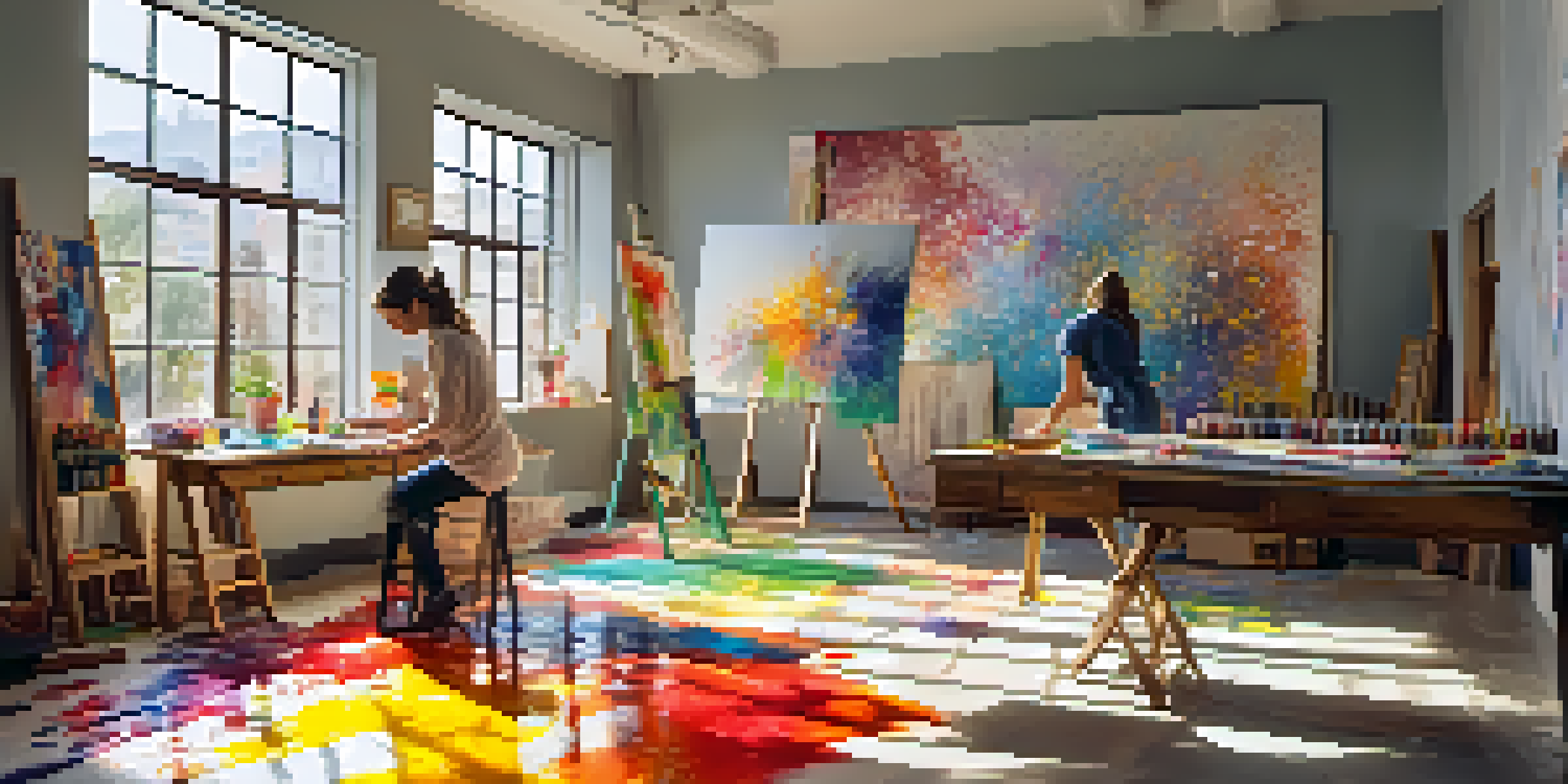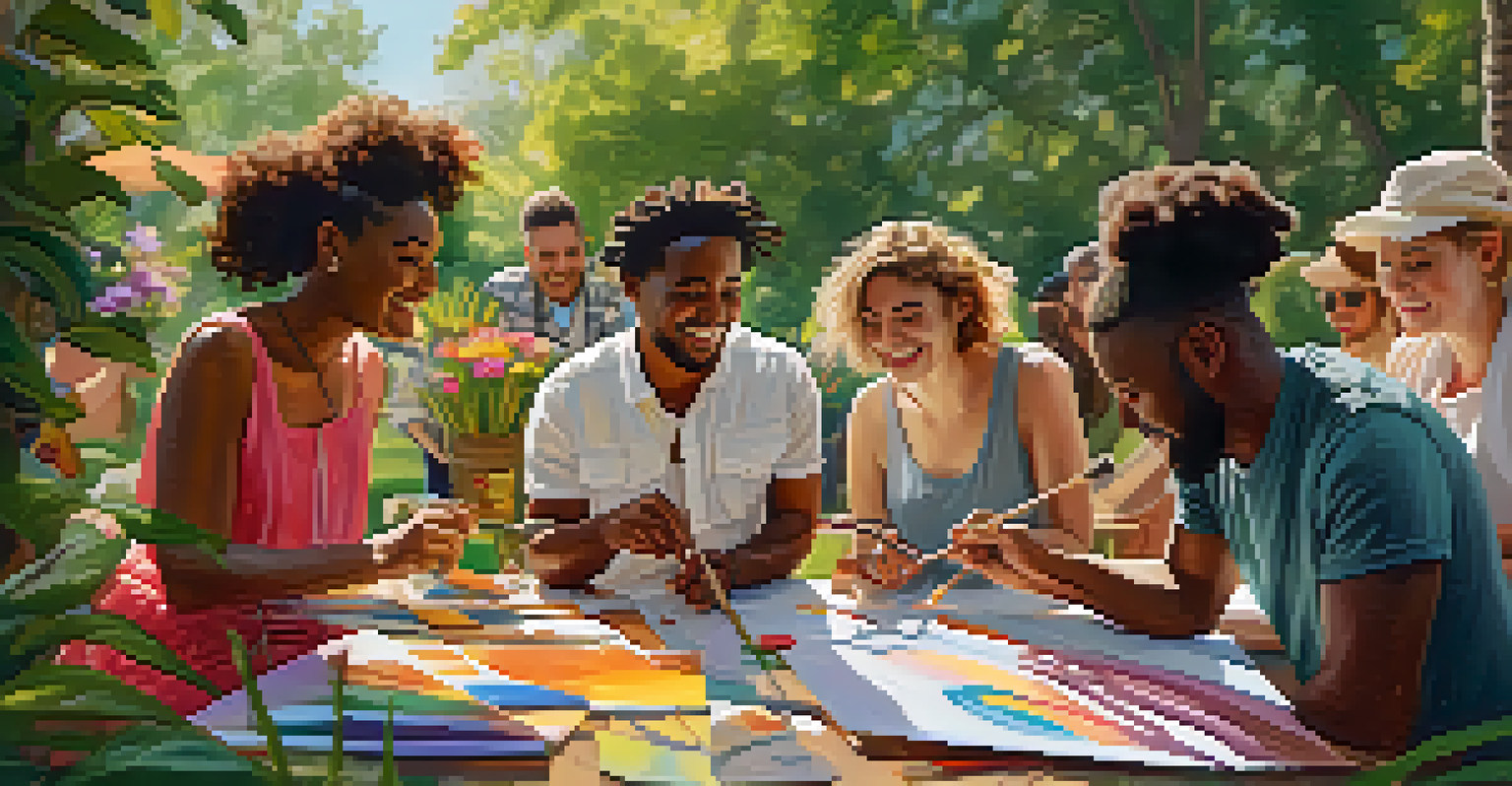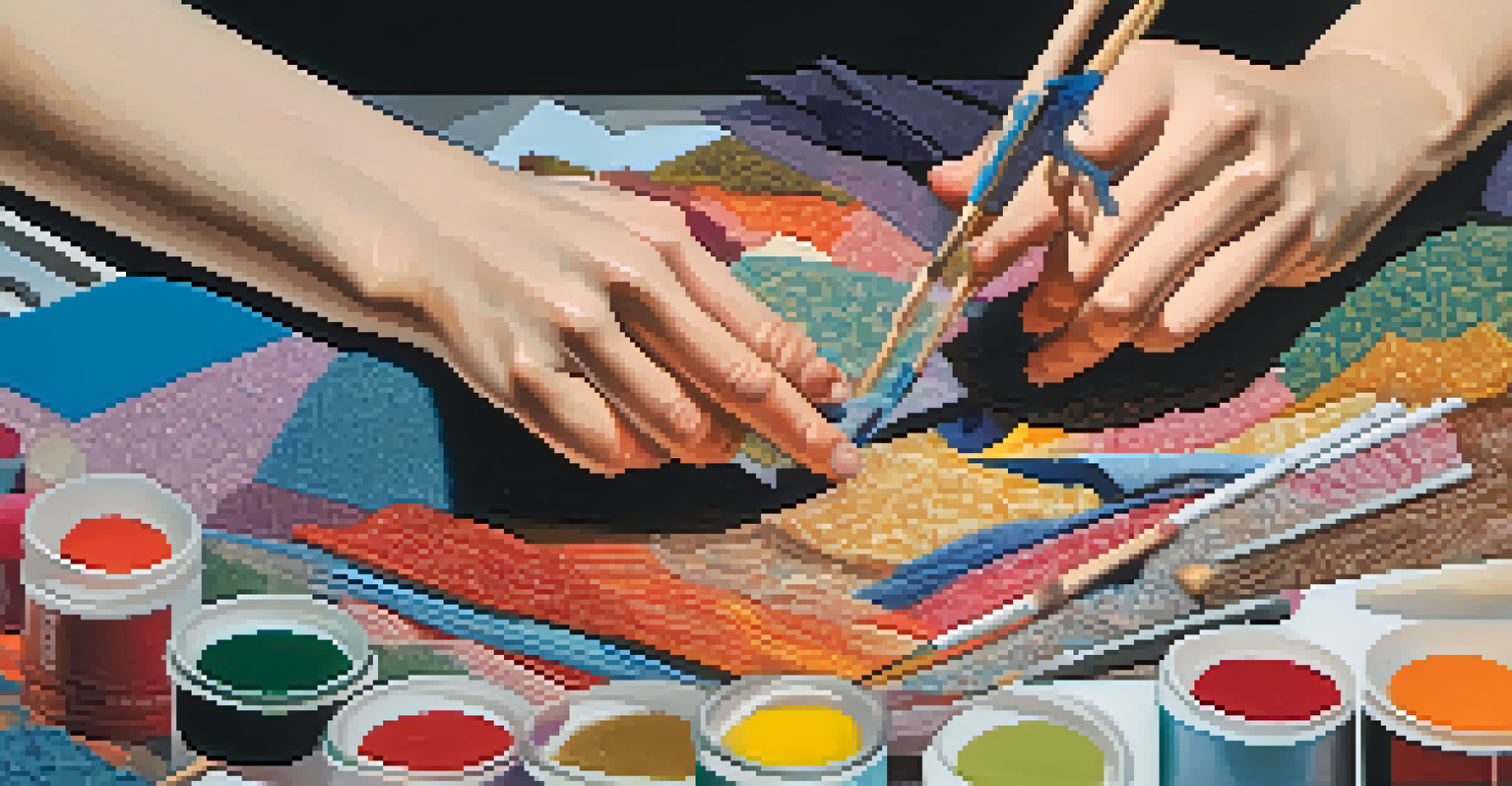How Playfulness Enhances the Artistic Experience for Artists

Understanding the Role of Playfulness in Art
Playfulness is often seen as something reserved for children, but it plays a vital role in art for creators of all ages. It allows artists to explore their creativity without the weight of expectations. When artists embrace a playful mindset, they often discover new ideas and techniques that they might have otherwise overlooked.
Every artist was first an amateur.
This mindset fosters an environment where experimentation is encouraged, leading to innovative work. Just like a child finds joy in creating without fear of judgment, so too can artists find freedom in their artistic expression. The more we can tap into that playful spirit, the more our art can reflect authenticity and originality.
Ultimately, playfulness enriches the artistic process, making it not just about the final product but also about the joy of creation itself. It reminds us that art is meant to be enjoyed, not just analyzed. By understanding the role of playfulness, artists can transform their practice into a more fulfilling experience.
Breaking Down Creative Barriers with Play
Many artists face creative blocks that can stifle their work, often stemming from fear of failure or perfectionism. Playfulness acts as a powerful antidote to these barriers. By allowing themselves to play, artists can shift their focus from the outcome to the process, removing the pressure that often accompanies creative endeavors.

For instance, an artist might start a painting using random colors and shapes, letting intuition guide them rather than a preconceived plan. This spontaneous approach can lead to unexpected and delightful results. In this way, playfulness serves as a liberating force that encourages artists to take risks and explore new avenues.
Playfulness Fuels Creativity
Embracing playfulness allows artists to explore their creativity without the burden of expectations, leading to innovative ideas and techniques.
When artists let go of rigid expectations and embrace curiosity, they often find that their creativity flows more freely. This newfound freedom can lead to breakthroughs that reignite their passion for art. Breaking down these creative barriers through play ultimately enriches the artistic journey.
Fostering Collaboration Through Playfulness
Playfulness isn't just beneficial for individual artists; it can also enhance collaborative efforts. When artists come together in a spirit of play, they create an atmosphere conducive to sharing ideas and experimenting. This collaborative play can lead to innovative projects that may not have been possible through individual work alone.
Art is the most beautiful of all lies.
Consider a group of musicians jamming together without a structured agenda. They might stumble upon a unique sound or harmony that none of them had previously considered. Similarly, visual artists can engage in playful group activities that spark creativity and foster connections, resulting in vibrant collaborative pieces.
In essence, playfulness builds a sense of community among artists, encouraging them to support and inspire one another. This collaborative spirit not only enhances the artistic experience but also leads to the creation of richer, more diverse works of art.
Incorporating Playful Techniques in Artistic Practice
Artists can actively incorporate playfulness into their routines by experimenting with different techniques and mediums. For example, an artist might try finger painting, collage, or even digital art without the pressure of creating a masterpiece. This exploration can reignite passion and inspire new artistic directions.
Another technique is to set aside regular time for play—much like a scheduled 'play date' with one’s creativity. Engaging in playful exercises, like doodling or free writing, can help artists reconnect with their imaginative side. These activities can serve as warm-ups, loosening creative muscles before diving into more serious work.
Collaboration Enhances Artistic Growth
When artists engage in playful collaboration, they create an environment that fosters idea-sharing and can result in unique and vibrant projects.
Ultimately, incorporating playful techniques into regular artistic practice can lead to a more joyful and fulfilling experience. It encourages artists to view their work not just as a job but as a delightful journey of exploration and self-discovery.
The Emotional Benefits of a Playful Artistic Approach
Embracing playfulness in art can also have profound emotional benefits. It can reduce stress and anxiety, allowing artists to enjoy their craft without the weight of self-criticism. When artists engage in playful activities, they often find themselves in a state of flow—a mental space where creativity thrives and time seems to disappear.
This emotional release can lead to greater satisfaction with one's work, as artists learn to appreciate the journey rather than fixate solely on the end result. For many, the act of creating becomes a form of self-care, providing a much-needed outlet for expression and relaxation. Playfulness can transform art from a chore into a cherished activity.
Ultimately, the emotional benefits of a playful approach can contribute to overall well-being. Artists who prioritize playfulness often find a deeper connection to their work and a renewed sense of purpose in their creative endeavors.
Overcoming the Fear of Judgment Through Play
One of the biggest hurdles for many artists is the fear of judgment—both from themselves and others. This fear can be paralyzing, stifling creativity and leading to a reluctance to share work. However, adopting a playful mindset can help artists confront and overcome this fear.
When artists approach their work with a sense of play, they can detach their self-worth from their art. Instead of viewing their creations as reflections of their abilities, they can see them as experiments or explorations. This shift in perspective allows for greater freedom and encourages artists to share their work without the fear of negative feedback.
Play Reduces Fear of Judgment
Adopting a playful mindset helps artists detach their self-worth from their work, allowing for greater freedom in expression and a willingness to share their creations.
By overcoming the fear of judgment, artists can fully engage with their craft and share their unique voices with the world. Embracing playfulness not only enhances the artistic experience but also empowers artists to express themselves authentically.
The Lasting Impact of Playfulness on Artistic Growth
The influence of playfulness on artistic growth extends far beyond individual projects. By making play an integral part of their creative practice, artists can cultivate a lifelong journey of discovery and improvement. This ongoing exploration can lead to a more dynamic and evolving artistic voice.
Artists who prioritize playfulness often find themselves open to new influences and inspirations, allowing their work to evolve continuously. They become more adaptable and willing to experiment, which can lead to the development of unique styles and techniques. This growth is not just about skill; it’s about expanding one's creative horizons.

In conclusion, the lasting impact of playfulness on artistic growth is profound. It encourages artists to remain curious and engaged, fostering a vibrant artistic life filled with joy, exploration, and discovery.